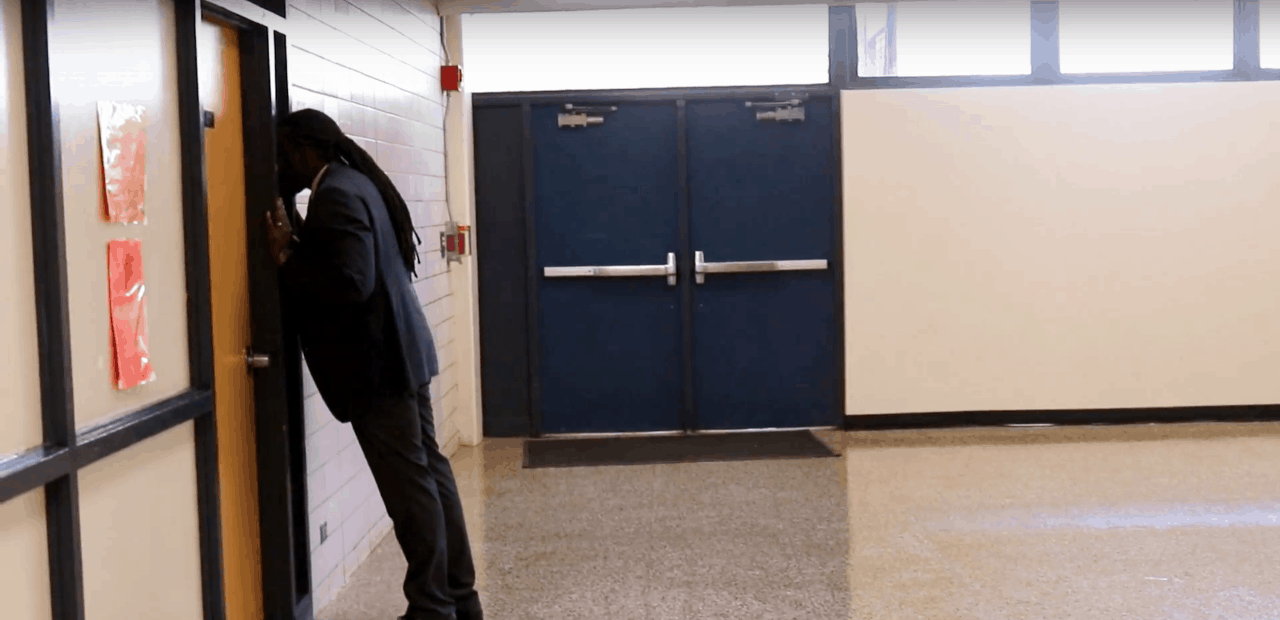Introduction
Since, the mid-1980s more attention has been paid to an ever-widening racial gap in teachers (Carnegie Forum on Education and Economy, 1986). It has been widely acknowledged that the teaching profession stands in need of greater diversity (U.S. Department of Education, 2010). Scholars and researchers began studying the impact of the teacher-student demographic mismatch in a nation that is increasingly becoming more non-white (Adair, 1984; Bates & Glick, 2013; Graham, 1987).
Despite the fact that traditional public schools across the country are majority students of color, this has not been reflected in the teacher workforce. Teachers of color make up 18 percent of the teaching profession, while students of color constitute just over half of overall student enrollment (Boser, 2014). More than 40 percent of schools across the nation do not even employ one teacher of color (The National Collaborative on Diversity in the Teaching Force, 2004). Consequently, most students of color will go through school having never been taught by someone of their own race. The lack of teacher diversity is of particular consequence for historically disenfranchised groups (i.e. Black, Latino, and Native American) who already experience disparate educational outcomes.
Background
The lack of teachers of color, black teachers specifically, is not without historical context. After the Brown v. Board decision initiated the desegregation of schools, scores of black teachers were fired or dismissed by school districts due to overt racism. Nearly 38,000 black educators in 17 Southern states were relieved of their duties within 10 years of the landmark decision due to white families not wanting their children taught by blacks (Tillman, 2004).
There is a growing body of research that demonstrates a positive correlation between teacher-student demographic matching and educational outcomes. When matched with teachers of the same race, black and Latino students in particular are more likely to experience increased teacher expectations, improved academic achievement, better behavior assessment, and decreased rates of suspension (Banjeree, 2018). A recent study found that for low income black students, having one black male teacher increased the likelihood of graduation by 39 percent (Gershenson, Hart, Lindsay, & Papageorge, 2017). Teachers of color serve as role models for students of color and also defy stereotypes for white students (Dee, 2005; Waters, 1989). Latino students, especially English Language Learners, appear to benefit from race-matching in schools where the overall teacher diversity is greater (Banerjee, 2018). It has been substantiated by several researchers that teachers are important factors in determining the life chances of students (Chetty, Friedman, & Rockoff, 2013). Therefore, intentional decisions about teacher recruitment and placement could be leveraged to help close opportunity gaps.
Latinos and Asians are the fastest growing racial subgroups and also least likely to experience racial matching (Bates & Glick, 2013). For these reasons, it is no longer suitable to discuss teacher diversity using the black/white racial binary. Teachers of color also tend to have a greater understanding of racism and cultural awareness that lends itself to a more responsive pedagogy (Gay, 2002; Nieto, 2000; Miller & Edno, 2005; Villegas & Lucas, 2002). Since schools are sites of socialization, they often reproduce the dominant hierarchies found in the larger society (Allen, 2014; Noguera, 2003). It is an institution based on White middle-class norms that frequently views students of color through a deficit lens (Allen, 2014; Delpit, 1995; Solorzano, 1997). Teachers of color are acutely positioned to serve as agents of disruption and advocate for more critical consciousness among same-race students and help them navigate systems (Allen, 2014). Not seeing own-race teachers or persons in authority can inadvertently reinforce notions of white supremacy for students of color (Mercer & Mercer, 1986). It, however, should not be assumed that because a teacher is of color that their pedagogy is culturally relevant or that their mere presence will improve outcomes (Villegas, Storm, & Lucas, 2012). The ability to tap into these funds of knowledge must be developed with intentionality (Hernandez & Sheets, 2001).
Barriers
There are several barriers that exist to attracting and retaining more teachers of color. Teachers of color often feel “tokenized” by being surrounded by nearly all white teachers (Atkins & Wilkins, 2013; Kanter, 1977; Meier, 1993). Additionally, they tend to teach in more segregated and high poverty environments. All of these factors contribute to higher feelings of dissatisfaction and attrition rates among new teachers of color. This undermines the effort to attract people of color to the profession (Banjeree, 2018; Villegas et al, 2012). Lastly, when reduced to stereotypical roles, it can contribute to a sense of “role entrapment” or being typecast as purely cultural experts and not instructional leaders (Banerjee, 2018; Bristol, 2014).
What if we created programs that expose high schools students of color to teaching careers? By encouraging students early in their educational trajectory to consider teaching, districts could effectively “grow their own.”
What if we designed opportunities for teachers of color to form communities at the school-level? Districts could offset the sense of being “tokenized” and capitalize on the cultural and instructional knowledge of teachers of color with their inclusion and consent.
Moving forward
While much is made about teachers of color — what motivates them, why they leave the profession, how to retain them, etc. — very rarely do we investigate what actually makes them special. Surely, being Black, Latinx, Native, or Asian does not make one a great teacher. It is more than “skin deep.” So, what is it about their pedagogy and cultural disposition that exerts such a positive influence on students? We want teachers of color — and you — to weigh in.
References
Adair, A. V. (1984). Desegregation: The illusion of black progress. Lanham, MD: University Press of America.
Allen, Q. (2015). Race, culture and agency: Examining the ideologies and practices of U.S. teachers of black male students. Teaching and Teacher Education, 47, 71-81.
Atkins, D. N., & Wilkins, V. M. (2013). Going beyond reading, writing, and arithmetic: The effects of teacher representation on teen pregnancy rates. Journal of Public Administration Research and Theory, 23(4), 771–790. doi:10.1093/jopart/mut001
Banerjee, N. (2018). Effects of teacher-student ethnoracial matching and overall teacher diversity in elementary schools on educational outcomes. Journal of Research in Childhood Education, 32:1, 94-118. doi:10.1080/02568543.2017.1393032
Bates, L.A. & Glick, J.E. (2013). Does it matter if teachers and schools match the student? Racial and ethnic disparities in problem behaviors. Social Science Research, 42, 1180-1190.
Boser, U. (2014, May). Teacher Diversity Revisited (Issue brief). Retrieved from https://www.americanprogress.org/wpcontent/uploads/2014/05/TeacherDiversity.pdf
Bristol, T.J. (2014). Black men of the classroom: An exploration of how the organizational conditions, characteristics, and dynamics in schools affect black male teachers’ pathway into the profession, experiences, and retention (Unpublished dissertation). Columbia University, New York, N.Y.
Carnegie Forum on Education and the Economy, Task Force on Teaching as a Profession. (1986). A nation prepared: Teachers for the 21st century. Washington, DC: Carnegie Forum.
Chetty, R., Friedman, J.H., & Rockoff, J.E. (2013). Measuring the impacts of teachers II: Teacher value-added and student outcomes in adulthood. American Economic Review, 104(9): 2633–2679.
Dee, T. S. (2005). A teacher like me: Does race, ethnicity, or gender matter? American Economic Review, 95(2), 158–165.
Delpit, L. (1995). Other people’s children: Cultural conflicts in the classroom. New York New Press.
Gay, G. (2002). Culturally responsive teaching: Theory, research, and practice. New York, NY: Teachers College Press.
Gershenson, S., Hart, C.M.D, Lindsay, C., & Papageorge, N.W. (2017). The long-run impacts of same-race teachers. (Discussion Paper No. 10630). Bonn, Germany: IZN Institute of Labor Economics.
Graham, P. A. (1987). Black teachers: A drastically scarce resource. Phi Delta Kappan, 68(8), 598–605.
Hernandez-Sheets, R. (2001). Trends in the scholarship on teachers of color for diverse populations: Implications for multicultural education. Equity & Excellence in Education, 34(1), 26–31. doi:10.1080/1066568010340104
Kanter, R. M. (1977). Men and women of the corporation. New York, NY: Basic Books.
Meier, K. J. (1993). Representative bureaucracy: A theoretical and empirical exposition. Greenwich, CT: JAI Press.
Mercer, W. A., & Mercer, M. M. (1986). Standardized testing: Its impact on Blacks in Florida’s educational system. Urban Educator, 8(1), 105–113.
Miller, P. C., & Endo, H. (2005). Journey to becoming a teacher: The experiences of students of color. Multicultural Education, 13(1), 2–9.
National Collaborative on Diversity in the Teaching Force. 2004. Assessment of diversity in America’s teaching force: A call to action. Washington, DC: National Collaborative on Diversity in the Teaching Force.
Nieto, S. (2000). Affirming diversity: The sociopolitical context of multicultural education (3rd ed.). New York, NY: Longman.
Noguera, P. (2003). Schools, prisons, and social implications of punishment: Rethinking disciplinary practices, Theory Into Practice, (42)4, 341-350, doi: 10.1207/s15430421tip4204_12
Solorzano, D. G. (1997). Images and words that wound: critical race theory, racial stereotyping, and teacher education. Teacher Education Quarterly, 24(3), 5-19.
Tillman, L.C. (2004). (Un)intended consequences?: The impact of the Brown v. Board of Education decision on the employment status of black educators. Education and Urban Society, 36, 280-303. doi:10.1177/0013124504264360
U.S. Department of Education. (2010). US Department of Education launches national teacher recruitment campaign [Press release]. Retrieved from http://www.ed.gov/news/press-releases/us-department-education-launches-nationalteacher-recruitment-campaign
Villegas, A. M., & Lucas, T. (2002). Educating culturally responsive teachers: A coherent approach. Albany, NY: State University of New York Press.
Villegas, A.M., Strom, K. & Lucas, T. (2012). Closing the racial/ethnic gap between students of color and their teachers: An elusive goal, Equity & Excellence in Education, 45(2), 283- 301, doi: 10.1080/10665684.2012.656541
Waters, M. M. (1989). An agenda for educating black teachers. The Educational Forum, 55(3), 358–367.



